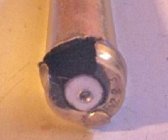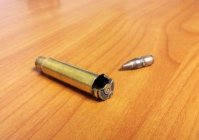DaveTooley
Gold $$ Contributor
Oh yes it is.Is that even possible?
No, case heads don't blow out all the time. Whatever the problem is it happened at the loading bench. 56KPSI would not destroy the bolt, extension, upper and lower.if the brass is soft from a bad anneal that ejector swage would happen on a normal pressure load.
i take it that no one here is familiar with forging of metal. I have been working in the metal forging business for over 20 years. When any metalis soft it will flow. Especially if the op'er does not know the history of the brass.
I seen it here from a local shooter. He scrounged brass at a local gun range. Every year they burn off the grass. Guess where he got the brass right after they burned the grass. Two weeks later he blows his gun up exactly like this. The brass was annealed dead soft from the fire.
Case heads blow out like this all the time. It just happens. ALL of you guys are assuming that the barrel, bolt, brass, load were all in spec. And if they were this would not happen.
I take it a lot of the guys here are not that familiar with how the AR system works and it shows. I have now given you 3 things that could all leade up to what happened. I don't think he messed up the loading one bit. That 23.5 load is safe for any 556 rifle. 25.3 is max for a 223 cartridge using a 55gr bullet. A 556 can go even higher.

















